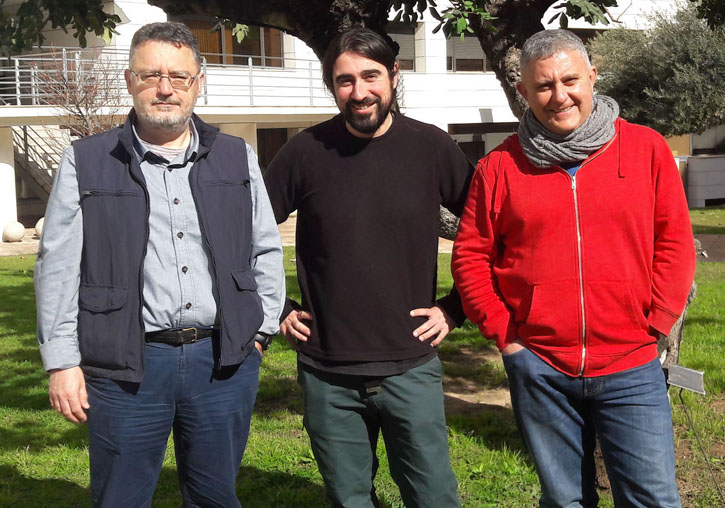A new 16 million years old bat fossil discovered at Alcora site
- Press Office
- December 2nd, 2020

A new 16 million years old species of bat has been discovered by an international team, which includes, among its members, professors Francisco J. Ruiz Sánchez and Plini Montoya of the Universitat de València. The finding has taken place in the Mas d'Antolino B paleontological site, in the municipality of Alcora, and it corresponds to the Lower Miocene of the Valencian Community.
The identification has been based on the study of isolated teeth. The study has been published in Earth and Environmental Science Transactions of the Royal Society of Edinburgh.
Apart from the two professors from the Universitat de València, attached at the Department of Botany and Geology, the team is made up of the palaeontologists Vicente D. Crespo (graduate at the Universitat de València), from La Plata Museum (Argentina), and Paloma Sevilla, from the Complutense University of Madrid.
The research refers to a group of bat fossil remains from several sites in the municipality of Alcora (Castellón), particularly near the district of Araia d'Alcora. These fossils, obtained in the framework of the authorized excavations and financed by the Conselleria de Cultura ([Valencian] Department of Culture), have produced some surprising data of great scientific interest. For example, a new species has been identified and the finding of a genus that was not known in fossil form has been described, which constitutes a true Lazarus taxon (that is, a taxon without a fossil record for a long period of time).
In addition, the group of fossil bats made up a typically tropical association, more typical of a previous geological time.
At the Mas d'Antolino B paleontological site, known since 2008, numerous species of shrews, squirrels, hamsters, dormice, crocodiles and other animals have been also recovered. These faunas, belonging to an environment that could remind us of the current tropical forest, are dated from more than 16 million years ago, at the beginning of the period known as Miocene, and more specifically in the "age of mammals" known as Aragoniense.
The new species of bat has been "baptized" with the scientific name of Cuvierimops penalveri, in honour of the palaeontologist Enrique Peñalver, former professor at the Universitat de València, recently recognized as one of the best international scientists, especially because of his works on fossil insects, and who has carried out studies in the same area where the findings were made.
The new species belongs to the family of bats currently known as free-tailed bats or molosides, but it belongs curiously to a genus that it was supposed to have become extinct ten millions years earlier. The aforesaid family was dominant in Europe during the period known as the Oligocene, between 33-23 million years ago. However, at the beginning of the Miocene it had already been reduced to a few species and nowadays it is represented by a single species. It is therefore surprising that five out of the ten bats discovered in Araia d'Alcora are species belonging to this family of molosides.
Within the recovered collection, it is worth-mentioning a representative of the Chaerephon genus, whose only fossil remains found so far are dated from only 10,000 years ago, which gives this discovery the category of a true Lazarus taxon. Other important bats found in Araia d'Alcora are the moloside Rhizomops, which is the first time that it is mentioned in the Lower Miocene, and the vespertilionid Submyotodon, which was found for the first time in a paleontological site in the Iberian Peninsula.
At that time, the Araia's environment would be a zone of tropical forest with areas of meadows, which would be located near a large lake that covered a large part of the current municipalities of l'Alcora, Ribesalbes and Fanzara. The tropical weather during the Lower Miocene is thus confirmed by the great abundance of molosid bats, which are nowadays typical of areas with a tropical climate, such as Central and South America, Ethiopia, India or Australia.
In order to obtain fossil remains of small mammals, a laborious process of washing and sifting several tons of sediment was carried out, as well as the abundant residue obtained at the end of this process. The study of the fossil tooth specimens was carried out by using various techniques, including electronic microscopy.
File in: Botànica i Geologia , Investigació a la UV
















